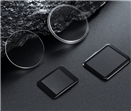

Time:2024-12-30
Sapphire glass, as an excellent material, is increasingly widely used in modern technology and industrial fields, especially in the manufacturing of optical components. This article will explore the characteristics, manufacturing processes, and applications of sapphire glass in optical components.
Sapphire glass is a single crystal material formed by the crystallization of high-purity alumina at high temperatures. This material has high hardness, wear resistance, and transparency, which make it important in applications that require high-performance materials. In addition, the thermal expansion coefficient of sapphire glass is very low, which means its size remains stable under temperature changes, which is crucial for precision optics and electronic devices. At the same time, it also has good electrical and thermal conductivity, as well as extremely strong corrosion resistance, which can maintain structural and performance stability for a long time in strong acid and strong alkali environments.

The production process of sapphire glass mainly includes steps such as chemical vapor deposition (CVD), cutting, polishing, and polishing. Chemical vapor deposition method uses gaseous chemical substances to deposit sapphire thin films on substrates, which is suitable for manufacturing high-precision optical components and electronic devices. In order to achieve the desired size and surface quality of sapphire glass, precise cutting, grinding, and polishing are required. These processes not only require advanced technical skills, but also strict quality control to ensure the performance and quality of the final product.
Sapphire glass is an ideal choice for manufacturing high-precision optical components due to its high hardness and wear resistance. In high-precision camera lenses, telescopes, microscopes and other optical instruments, it can maintain long-term clarity and stability, and improve imaging quality. Secondly, the high transparency of sapphire glass makes it excellent in optical windows, lenses, prisms, and other components. As a window material in high-power lasers, infrared detectors, night vision devices, and other equipment, it can withstand high-energy radiation and high temperature environments, maintaining excellent light transmission performance.






Tel
Mobile phone
Customer service
TOP